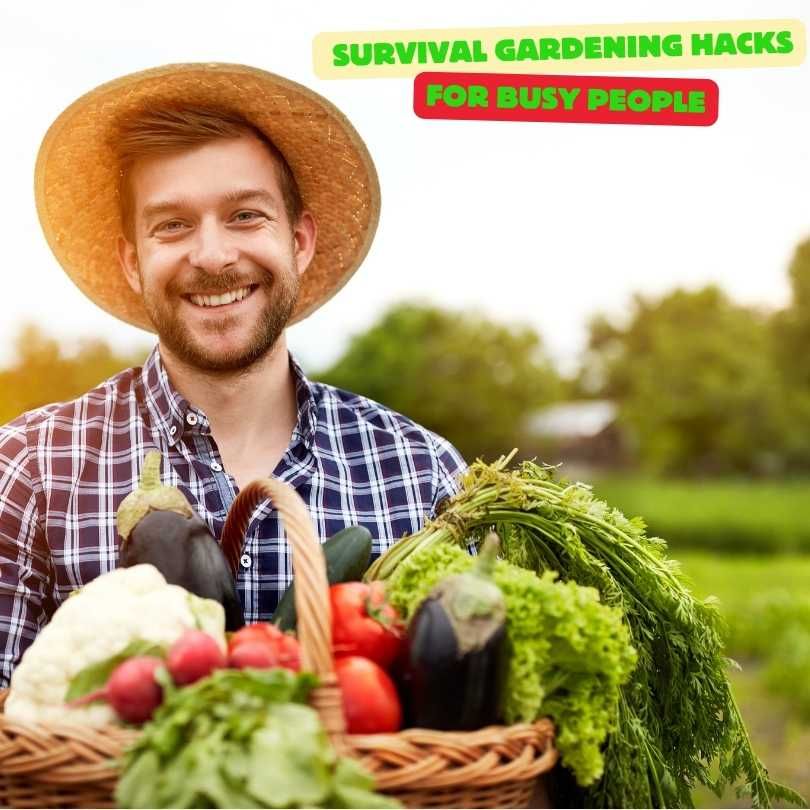
Key Takeaways
Choose resilient crops like kale, beans, and squash for low-maintenance, high-yield production.
Use vertical gardening to grow more food in less space, perfect for small areas.
Start seeds indoors to extend the growing season and get a jump on harvest.
Implement companion planting to naturally deter pests and boost plant health.
Collect rainwater and install a simple DIY drip irrigation system to save time and conserve water.
Gardening isn’t just about planting seeds and watching them grow; it’s about creating a sustainable, self-sufficient lifestyle. And when life gets busy, it’s all about smart strategies to maximize your time and effort. Let’s dig into some survival gardening hacks that will keep your garden flourishing without taking up all your free time.
Streamline Your Survival Garden
Starting a garden can be daunting, especially when you’re short on time. But with a few strategic choices, you can create a thriving survival garden that’s both manageable and productive.
Selecting Low-Maintenance, High-Yield Crops
When it comes to survival gardening, the goal is to get the most food with the least amount of work. That’s why selecting the right crops is crucial. Go for plants that are known for their resilience and abundance.
Kale: Hardy and nutrient-rich, kale can grow in almost any climate and keeps producing leaves throughout the season.
Beans: With both bush and climbing varieties, beans are protein-packed and can be easily dried and stored.
Squash: Squash plants spread out and suppress weeds, giving you a double win: lots of food and less weeding.
These plants aren’t just survivors; they’re thrivers. They’ll push through tough soil and variable weather to give you a bountiful harvest with minimal babysitting.
Maximizing Space with Vertical Gardening Techniques
Don’t let a small backyard or a balcony stop you from growing your own food. Vertical gardening is a game-changer. It’s about growing up, not out, and it’s perfect for maximizing yield in tight spaces.
Use trellises for vining plants like cucumbers and peas to take advantage of vertical space.
Install shelves or hanging planters for herbs and strawberries.
Repurpose items like ladders or pallets to create vertical growing structures.
With a bit of creativity, you can turn even the smallest space into a productive garden.
Saving Time with Smart Planting Strategies
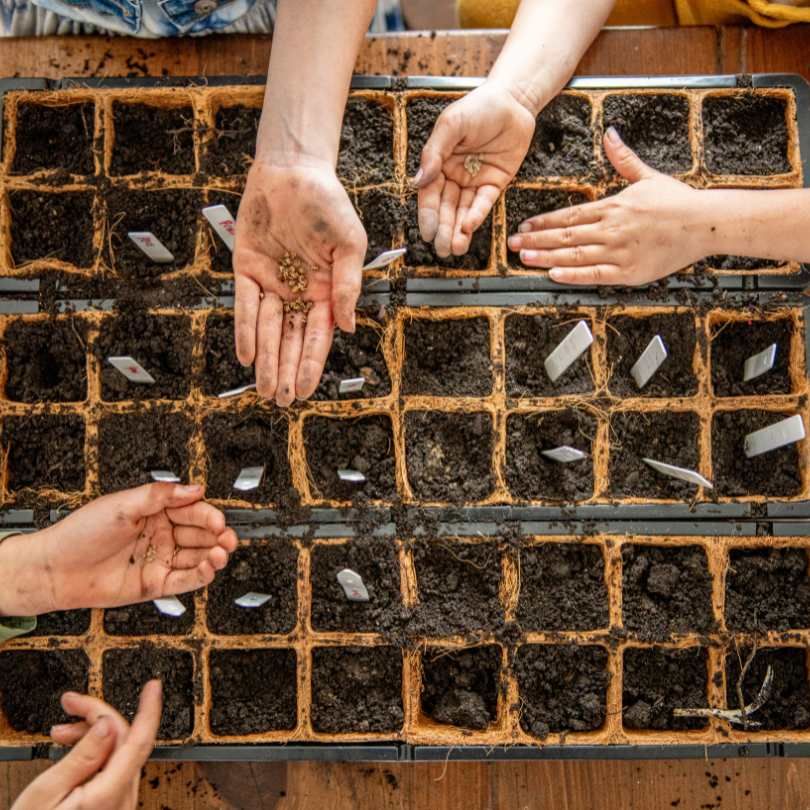
Efficiency is key when you’re pressed for time. By planning your garden layout and planting schedule, you can reduce the daily workload and still enjoy a great harvest.
Pre-Seeding Indoors for a Head Start on Growth
Getting a jump on the growing season is as simple as starting your seeds indoors. By the time the last frost has passed, your seedlings will be ready to go into the ground, giving you a head start on the growing season and a faster path to harvest.
Start seeds in trays or pots indoors 4-6 weeks before the last expected frost.
Use a sunny window or grow lights to ensure your seedlings get enough light.
Harden off your plants by gradually exposing them to outdoor conditions before transplanting.
It’s a little effort up front for a big payoff later—strong, healthy plants that are ready to take off as soon as they hit the soil.
Choosing Companion Plants for Natural Pest Control
Companion planting is like matchmaking for your garden. Some plants just get along better together, and when they’re paired up, they can help each other thrive. Besides that, they can keep pests away without you having to lift a finger.
Marigolds repel nematodes and other garden pests with their strong scent.
Basil planted near tomatoes can improve their flavor and repel flies and mosquitoes.
Planting nasturtiums can lure aphids away from your precious crops.
It’s all about creating a balanced ecosystem where plants look out for each other, saving you time on pest control.
For example, I once had a terrible aphid problem on my bell peppers. But after planting some nasturtiums nearby, the aphids migrated to the nasturtiums, which are much tougher and less affected by the pests. It was a simple, natural solution that saved my peppers without any extra work.
Stay tuned for more survival gardening hacks that will help you cultivate a lush, productive garden with ease.
When it comes to survival gardening, your soil is your foundation. Healthy soil equals healthy plants, and healthy plants mean more food on your table. So let’s talk about keeping your soil rich without spending all day on it.
Fertilization Without Fuss
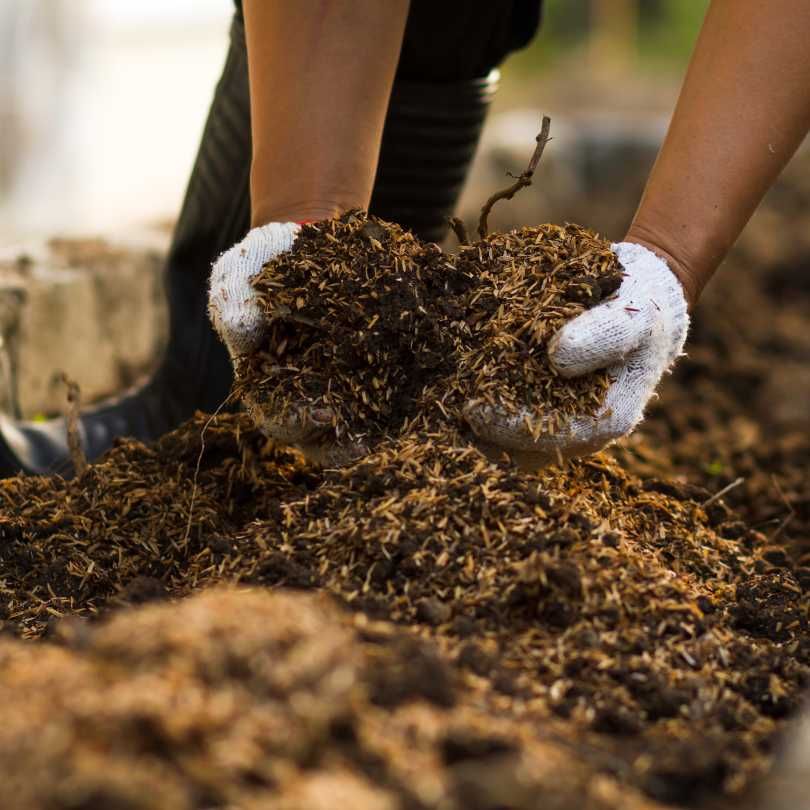
One of the secrets to a low-maintenance garden is creating a self-sustaining soil ecosystem. You want your soil to do most of the work for you, which means it needs to be rich in organic matter and nutrients.
But how do you create this magical soil without fuss? It’s simpler than you might think.
First, focus on adding organic matter to your soil. This can be anything from fallen leaves to grass clippings. These materials break down over time, feeding your soil and improving its structure. This means better water retention, improved aeration, and a buffet of nutrients for your plants.
Add a layer of organic mulch to your garden beds to suppress weeds and retain moisture.
Chop and drop any garden waste right back onto the soil as a green manure.
Practice crop rotation to prevent nutrient depletion and reduce disease build-up.
With these simple steps, you’ll be on your way to creating a self-feeding garden that requires less intervention from you over time.
Creating and Using Compost for Soil Enrichment
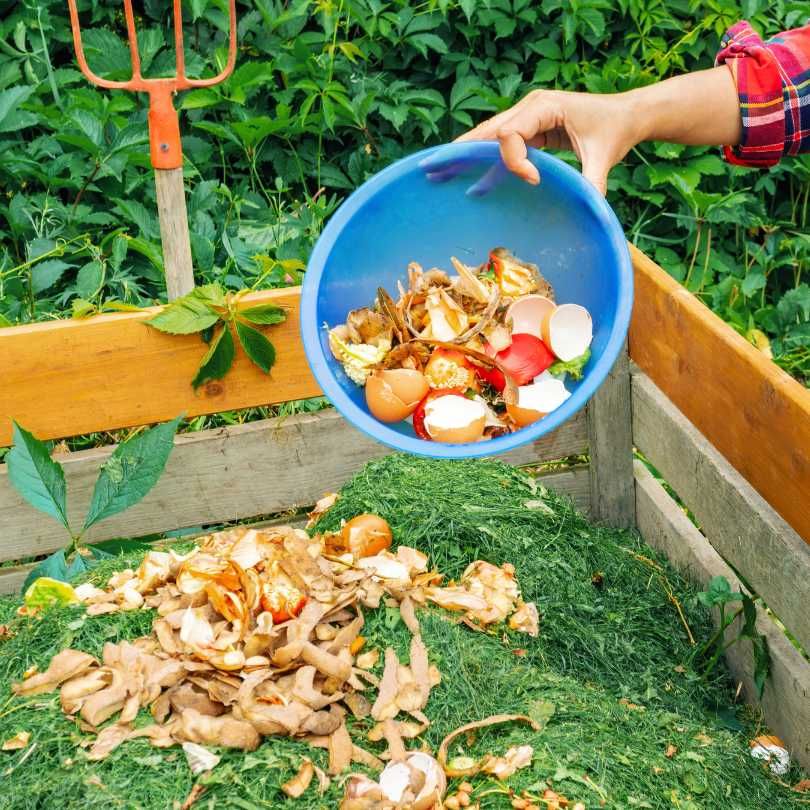
Compost is like gold for gardeners. It’s the end product of decomposed organic material, and it’s packed with nutrients that your plants love. Making your own compost might seem complex, but it’s actually pretty straightforward.
Start with a simple compost bin or pile in a convenient spot in your yard.
Add a mix of ‘greens’ (kitchen scraps, fresh plant material) and ‘browns’ (dry leaves, straw, cardboard).
Keep the pile moist and turn it occasionally to speed up the decomposition process.
Once the material has broken down into a dark, crumbly substance, it’s ready to use.
Spread this homemade compost on your garden beds, and watch your plants thrive. It’s a bit of effort upfront, but once you get the hang of it, you’ll have a steady supply of the best plant food around.
Effective Natural Fertilizers You Can Make at Home
Besides compost, there are other natural fertilizers you can make at home. These are perfect for giving your plants a boost without relying on store-bought chemicals.
Banana peels: Soak them in water for a few days and use the water as a potassium-rich fertilizer.
Coffee grounds: Sprinkle them around your plants to add nitrogen to the soil.
Eggshells: Crush them up and add them to your soil for a calcium boost.
These simple kitchen scraps can be turned into valuable food for your garden, and they’re practically free!
Protection and Pest Control
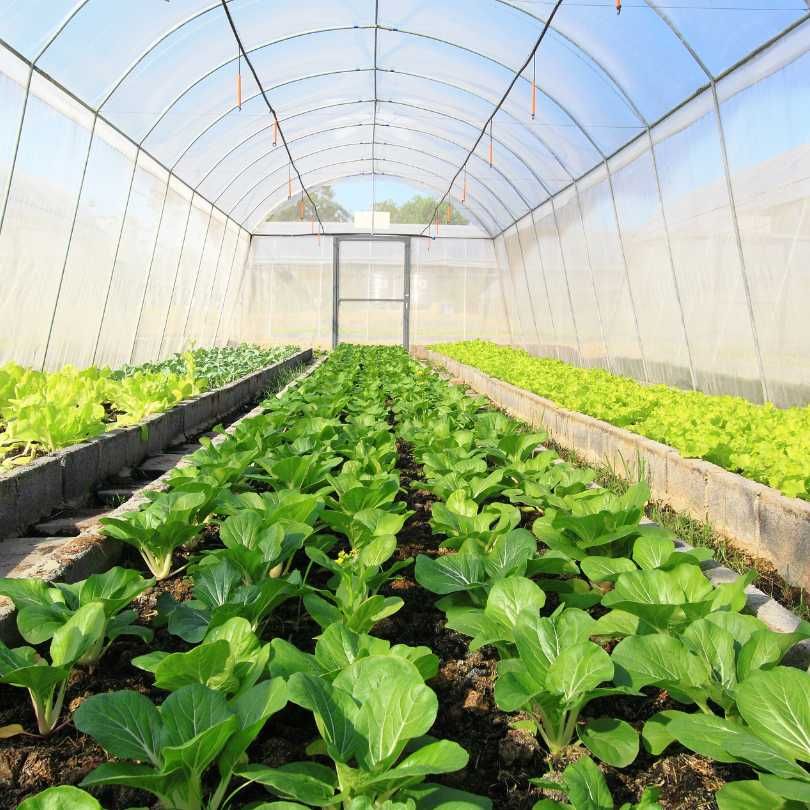
A big part of gardening is protecting your plants from pests and diseases. But don’t worry, you don’t need to spend your whole day squashing bugs or spraying chemicals. There are simpler, more natural ways to keep your garden healthy.
Homemade Natural Pesticides
If you’re dealing with a pest problem, you can often find the solution right in your pantry. Homemade pesticides are a great way to deal with pests without resorting to harsh chemicals.
Here’s a simple recipe to try:
Mix 1 tablespoon of liquid soap with 1 quart of water.
Add a few drops of neem oil or essential oils like peppermint or rosemary for extra potency.
Spray it directly on the pests or on the leaves of plants that are under attack.
This mixture will help repel pests and can even kill soft-bodied insects like aphids on contact.
And remember, not all insects are bad. Attracting beneficial insects, like ladybugs and lacewings, can help control pests naturally. Planting flowers like marigolds or herbs like dill can draw these helpful critters to your garden.
Using Physical Barriers for Crop Protection
Row covers: Lightweight fabrics that let light and water in but keep pests out.
Netting: Perfect for keeping birds and larger insects away from your fruiting plants.
Fencing: A small fence can deter rabbits and other critters from munching on your greens.
By using these barriers, you can prevent a lot of damage without having to be constantly on guard.
And sometimes, the best defense is a good offense. Keeping your garden clean and removing any diseased plants or rotting produce can go a long way in preventing pest and disease problems.
Harvesting and Storage for Longevity
Once your garden starts producing, it’s all about timing. Harvesting at the right moment ensures the best flavor and the longest shelf-life for your produce.
Best Practices for Harvesting your Produce
Most vegetables are best harvested in the morning when they’re still cool from the night air. This helps them stay crisp and fresh. For leafy greens, cut only what you need and let the rest continue to grow. For root crops, wait until they’re the size you want, but don’t let them sit too long or they might become woody. Learn more about maximizing your garden’s economic efficiency with proper harvesting techniques.
For fruits like tomatoes and berries, wait until they’re fully ripe before picking. This ensures the best taste and the highest nutrient content.
Storing Your Bounty for Long-Term Survival
Once you’ve harvested your crops, proper storage is key to making them last. Cool, dark, and dry places are best for most produce. Some crops like potatoes and onions need to be cured first to extend their shelf-life.
For long-term storage, consider preserving your harvest through canning, drying, or freezing. These methods lock in the nutrients and flavors and can keep your food safe to eat for months or even years.
With these tips, you can manage a productive survival garden that fits into your busy life. And when you’re ready to take your garden to the next level, check out the wide variety of heirloom and non-GMO seeds at Survival Essentials. Their selection is specifically curated to help you grow a robust, self-sufficient garden that can weather any storm.
Remember, survival gardening isn’t just about the end of the world scenarios; it’s about taking control of your food supply and knowing that, no matter what happens, you can feed yourself and your family. It’s empowering, it’s practical, and with these hacks, it’s absolutely doable, even for the busiest among us.
Survival Gardening Essentials: Products to Get You Started
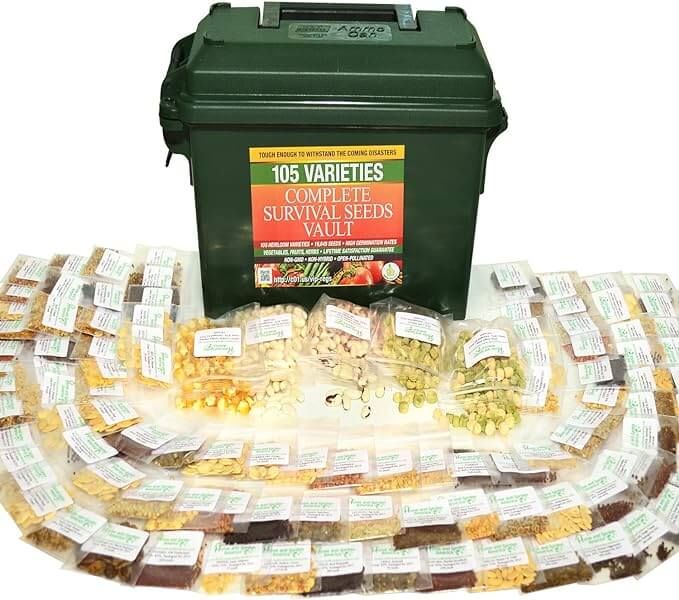
Now that you’ve got the know-how, it’s time to gear up with the right tools and resources. A well-equipped gardener is a successful gardener. Let’s explore some essentials that can make your survival gardening journey smoother and more productive.
High-Quality, Durable Gardening Tools
Investing in high-quality tools can make a world of difference in your survival gardening experience. Look for tools that are durable, ergonomic, and designed to last. Your basic survival gardening kit should include a sturdy shovel, a reliable hoe, a sharp pair of pruning shears, and a robust rake. These tools will help you prepare your soil, maintain your garden, and harvest your crops with ease.
Heirloom and Non-GMO Seed Varieties
Choosing the right seeds is crucial for survival gardening. Heirloom and non-GMO seeds are not only better for the environment, but they also produce plants that are more resilient and better adapted to local conditions. Plus, you can save seeds from year to year, ensuring a continuous supply. Visit Survival Essentials to find a wide selection of heirloom and non-GMO seeds that will help you grow a diverse and sustainable garden.
FAQ
What Are the Easiest Crops to Grow for Survival?
The easiest crops to grow for survival are those that are hardy, require minimal maintenance, and provide a substantial yield. Some top choices include potatoes, beans, squash, and leafy greens like spinach and kale. These crops can thrive in a variety of climates and soil types, making them reliable staples for any survival garden.
How Much Time Daily Should I Dedicate to a Survival Garden?
On average, you should plan to dedicate at least 30 minutes to an hour each day to your survival garden. This time will be spent watering, weeding, monitoring plant health, and eventually harvesting. Of course, the time commitment may vary depending on the size of your garden and the specific needs of your plants.
What Are the Best Plants for a Drought-Resistant Garden?
For a drought-resistant garden, focus on plants that are naturally adapted to dry conditions. Some of the best choices include succulents like aloe vera, vegetables like okra and eggplant, and herbs such as rosemary and thyme. These plants require less water and can survive periods of drought with minimal care.
Can I Use Non-Potable Water for Irrigation in Survival Gardening?
Yes, non-potable water, such as rainwater or gray water from household use, can often be used for irrigation in survival gardening. However, it’s important to ensure that the water does not contain harmful chemicals or pathogens that could damage your plants or pose a health risk. Always filter or treat non-potable water appropriately before use.
How Do I Keep Pests Away Naturally?
To keep pests away naturally, employ strategies such as companion planting, encouraging beneficial insects, and using homemade organic repellents. For example, planting garlic near roses can help deter aphids. Introducing ladybugs into your garden can control the population of harmful insects. A spray made from neem oil and water can act as a natural pesticide.





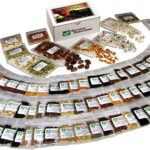

Leave a Reply